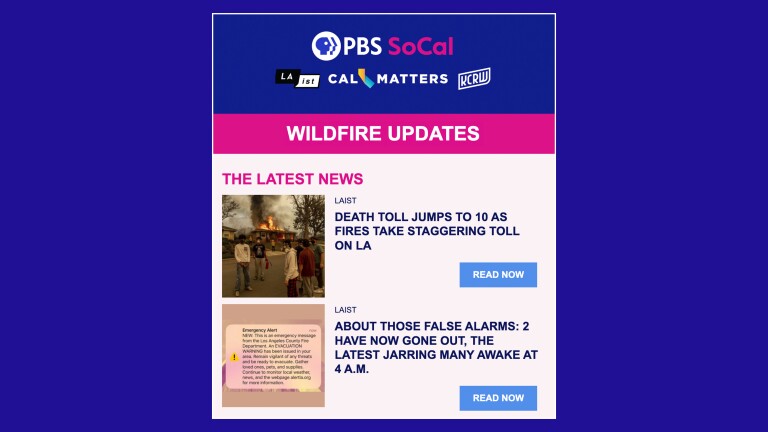Fire Debris Has Washed Up as Far as The South Bay. Is it Safe to Go to The Beach?

This article was originally published Feb. 21, 2025 on laist.com.
After heavy rains, we’re learning more about how the Palisades Fire runoff could be affecting our coastline. County officials and other groups have been testing the areas for things like heavy metals that could cause health concerns.
Last month, the Los Angeles County Department of Public Health temporarily closed about nine miles of ocean water, which reopened recently.
But L.A. County’s Department of Beaches and Harbors (DBH) said Tuesday the storms had washed up large amounts of timber and twisted metals, as well as charred silt and sediment, onto the coast.
So where do things stand? We look into whether it’s OK for people to visit the beach.
As wildfires impact our communities, your trusted public media organizations have come together to deliver free, reliable, and essential news and updates.

Should we be worried about debris?
Not all debris is necessarily harmful. County beach and harbor officials said the debris that’s washing up is made of fine ash mixed with sand. Testing is ongoing but early results look good.
Sediment tests from Will Rogers State Beach and Topanga Beach after the Jan. 26 storm showed “the material was not hazardous to beachgoers or the environment,” according to the department.
As for the dark, charred sediment, the department says it has no plans to remove it, because scraping it off could cause long-term environmental damage to ecosystems and the shoreline.
However, the larger charred debris — like big wood pieces that have been found as far south as Redondo Beach — is being removed by crews as soon as it washes up.
If you see pieces of large debris on the beach, you should report it to the nearest lifeguard, or call DBH at (424) 526-7777.
The confusion
Last month’s ocean water closure initially sparked some concern, as beachgoers were told to avoid contact with sand from Las Flores State Beach to Santa Monica State Beach.
But the beaches themselves — where people could lie down and sunbathe — stayed open. David Ginsburg, a USC environmental studies professor, tried to find information about beach conditions but ended up confused over the contradictory information.
“ I don’t think that’s on purpose, but I think that’s because there’s a lot of uncertainty about where various closures and advisories may be put up for water quality and beach locations,” he said.
Public health officials later revised that ocean water closure to only avoiding contact with debris on the sand. Then it was downgraded to an advisory after testing from Las Flores State Beach to Dockweiler State Beach “did not indicate ocean impacts that pose a human health risk.”
Ginsburg, who’s an expert in pollution in coastal waters, said one of the reasons behind the confusion is that there aren’t easy ways to test for wildfire contaminants at the beach. Scientists need to have an idea of what they’re looking for first, and ocean water testing for public recreation is typically designed around bacteria levels.
“ What we don’t have a good set of standards for is looking for everything else that might be in the water, given this unprecedented event of wildfire and what could be making its way from the burn areas into the water,” Ginsburg said.
The nonprofit Heal the Bay is working alongside other organizations to try and test for these concerns. They've tested the waters a few times already, and their results should be posted in the next few weeks here.
What testing means for you
If you’re wondering if you should be going to the beach, experts say it should be fine as long as you follow some common sense practices.
Howard Hu, a professor of preventive medicine also at USC, said beach advisories are a precautionary step while testing is completed. As an expert in toxic exposure and coastal areas, he said the main concern isn’t usually about sand directly.
“ I think the advisories are really all about the discharge from storm drains and things that end up flowing out into the ocean and then coming back onto the beach whenever the tide comes in and out,” Hu said.
Health officials have said the beaches are safe to be at, but that beachgoers should continue to avoid fire debris. As a precaution, you may want to avoid wet sand and areas near storm drains. Untouched sand should be fine.
“I think that would be just as contaminated as the ground that’s in places that hadn't burned,” Hu added.
You can find the latest beach advisories here. Heal the Bay is also regularly updating its Beach Report Card here.

